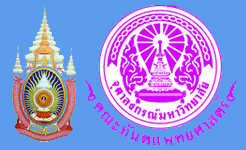
The
ultrastructure and cytochemistry of the tegument's glycocalyx of Opisthorchis
viverrini during maturation from newly excysted juvenile to adult stages
were investigated by using colloidal iron, ruthenium red and lectin stainings.
The result showed that the glycocalyx was intensely stained by the first
two dyes, thus indicating the presence of relatively high amount of negative
charges. However, the thickness and intensity of the staining decreased
during the fluke's maturation. Binding studies using lectin probes on the
surface of adult parasites showed that binding sites for Canavalia ensiformis
(Con A), Triticum vulgaris (WGA) and Ricinus communis I (RCA I) were present
in relative large amount on the glycocalyx of the adult tegument, whereas
those for Dolichos biflorus (DBA) were relatively fewer in number, and those
for Ulex europaeus I (UEA I) were absent. The binding patterns of Con A,
WGA, RCA I and DBA were generally similar, and the reaction product was
uniformly distributed over the dorsal and ventral surfaces of the parasite's
body. These bindings, therefore, indicate the presence of D-mannose/D-glucose,
N-acetyl-D-glucosamine/sialic acid, D-galactose and N-acetyl-D-galactosamine
residues on the glycocalyx of the adult tegument.